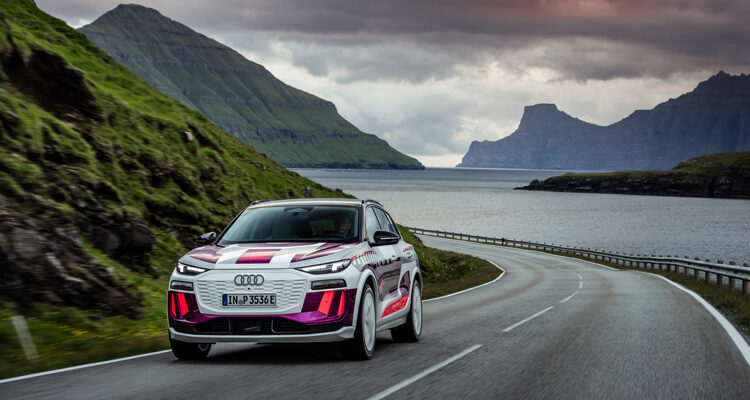Electricity. Without it, humans can’t exist. It is at the center of what makes us tick. Human cells are designed to conduct electrical currents, sending signals throughout our bodies to the brain, arms, legs, back. The way we move, speak, breathe, think and dream are all reliant on electricity. Like me, you probably never give it a thought, but it is a fact.
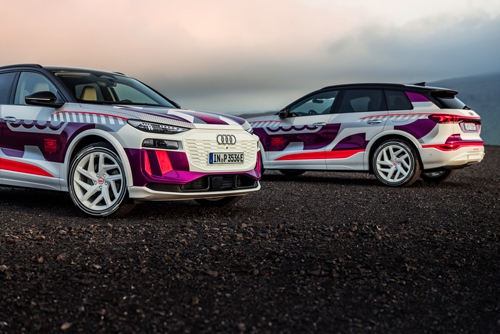
The same can be said for the automobiles we drive. Without the initial charge provided by electricity, it would be pretty silly to think of getting behind the wheel and heading down the road. Fred Flintstone could, assuming you are old enough to remember the ultimate in peddle-power, but that’s about it.
So why should we all be surprised when it seems the next logical step for the automobile is to rely more heavily on the technology that already powers humanity and the vehicles we drive. Isn’t it really just common sense? While it might not be as much fun as revving a gasoline-powered sports car to 9,000 rpm and listening to the sweet crackle and pop of pistons exploding fuel in a cylinder, electricity as the main power source for automobiles and motorcycles seems, dare I say, obvious.
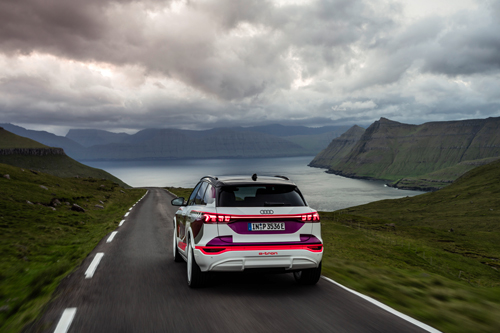
Audi thinks so too and it’s the reason why I was driving a prototype of the 2024 Audi Q6 e-tron on the Faroe Islands a few months ago. Since that time, the German automaker has released more details of the upcoming new model for 2024 and it, like the electricity that powers the new Q6 e-tron, looks to be a game changer.
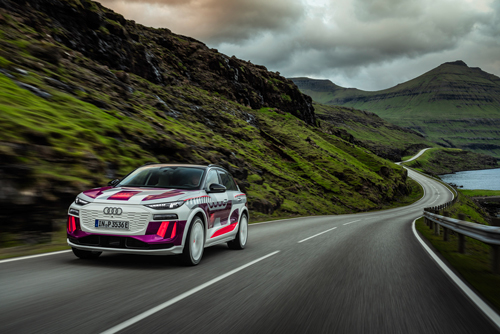
“All-encompassing digitalization, the central importance of sustainability and personal freedom, new definitions of time well spent and luxury – we unquestionably live in the most exciting times in the history of automotive design. So it is exactly the right moment for brave and creative minds to ask innovative questions and leave the well-trodden path to find intelligent answers elsewhere,” says Head of Audi Design Marc Lichte. “One of these questions forms the starting point of our new design process: What do our customers want to experience in and with their vehicle? Because their needs and desires uniquely shape the space, the architecture, and the functions. By understanding the interior as the center of our customers’ lives and experiences, we are rejecting the status quo and systematically designing the vehicle from the inside out. With the Q6 e‑tron, we are giving our vision concrete form in the present.”
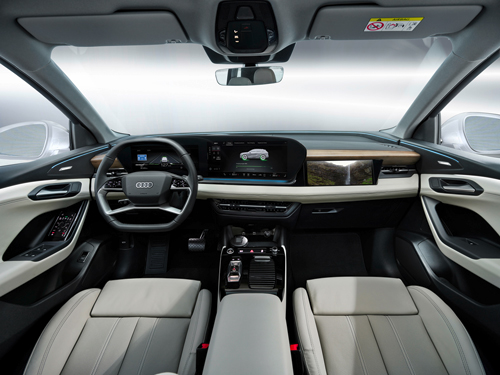
If the next obvious step in automobile design is for all of us to plug-in to an electrified future, it is equally apparent that Audi, like many other automakers these days, realizes the importance of designing a new vehicle from the inside out. Inside is where we spend the majority of our time, so getting it right from the start is critical to a vehicles overall success. While I did not get the full experience in my test drive on the Faroe Islands, I did get a sense of space and it was impressive.
Recently revealed interior images highlight what Audi refers to as a “cozy ambiance”. Softwrap materials extend from one door across the dash to the other side. It is designed to cocoon occupants in complete comfort, focusing not just on touchpoints and design, but a calming colour palette and the strategic use of synthetic materials in key areas.
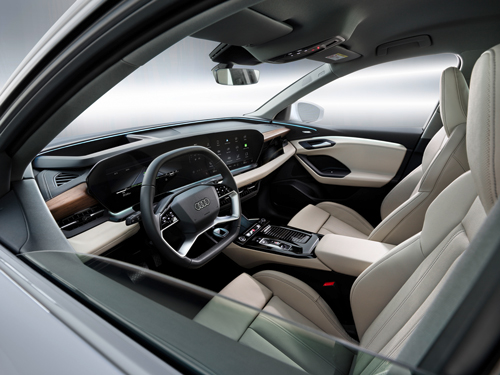
For example, S-line models employ Elastic Melange throughout the interior, a recycled fabric which Audi states is made from 100 percent recycled polyester. You can also order sport seats covered with the same material. Additional seating materials include Dinamica microfibre (also a recycled material) or Nappa leather with diamond stitching.
Soft textures are one thing, but driving requires continuous access to important information. In the area Audi designates as the “digital stage”, a high-gloss black background provides optimum clarity and ease of use while driving.
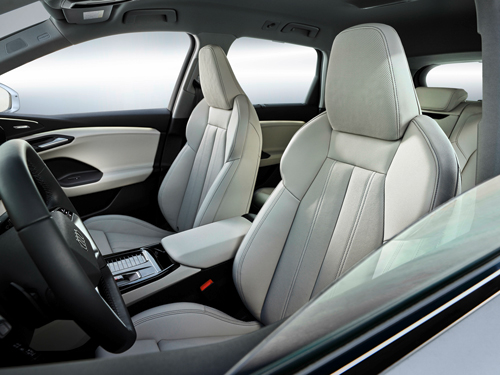
Two curved glass panels provide quick information for the driver. The 11.9” virtual cockpit is driver focussed, while beside it a 14.5” touch panel is the access point for most vehicle features. At night, unique ambient lighting makes it look as though the panel is floating on the dash. Front seat passengers have access to their own 10.9” MMI interface. A privacy mode with shutter technology allows the passenger to watch movies without distracting the driver as well as assist with navigation when needed.
Having spent significant time driving the Audi Q6 e-tron prototype a few months ago, I can attest to the comfort provided by the front sport seats. Our course over a few days required driving on many different road or offroad surfaces and the seats performed admirably in all circumstances. Visibility was equally excellent at all times, with no significant blind spots to contend with.
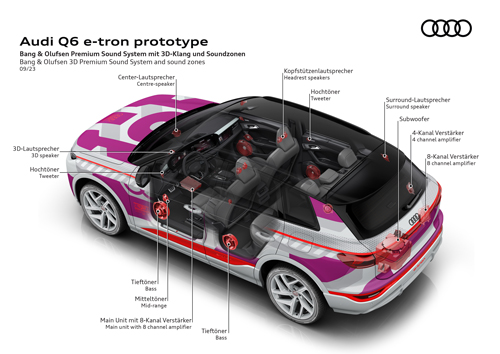
Back seat passengers should have excellent space for up to three occupants and Audi has built in enough storage and plug-ins to satisfy almost any request. A Bang & Olufsen Premium Sound System consists of 22 speakers strategically placed throughout the interior to provide an exceptional 3D sound experience for all.
The Audi Q6 e‑tron is built on the newly developed Premium Platform Electric (PPE) and the new E3 electronics architecture. This structure allows the engineers a broader platform on which to design and execute each new vehicles and the Q6 e-tron takes full advantage. To find out more, watch for our test drive on the newest e-tron from Audi in the coming months.



